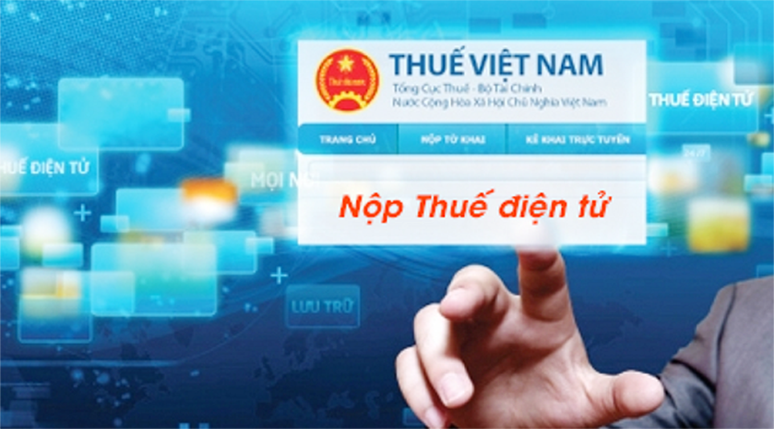 |
| The tax sector will focus on building a national tax database on an integrated and big data platform |
100% of administrative procedures will be conducted online at levels 3, 4
The overall goal of the scheme on information technology (IT) development to 2030 for tax sector is an integrated and centralized IT system that meets the requirements of digital information exploitation and the use of the Government, people, businesses and organizations, the direction and administration of tax authorities and the provision of electronic and digital services to taxpayers.
The tax sector database must ensure the accuracy, completion, timely and effectively supporting risk management, moving towards an automatic mechanism to systematically cross-check information from third parties in order to detect potentially dangerous contents leading to errors in tax returns. Furthermore, IT technical infrastructure and equipment must be advanced and modern to ensure continuous, efficient operation, information safety and data security.
The goal of applying IT in providing services to taxpayers by 2025 is that 100% of taxpayers will be granted e-identification and e-authentication to use e-tax services provided by the tax sector; 90% of tax administrative procedures are carried out in the form of e-transactions at level 3 and 4.
100% of online public services at levels 3 and 4 are connected and shared with the National Public Service Portal, 100% of information on e-tax returns and e-tax payments is processed in 24 hours, and 100% of the amount of e-tax payment is accounted for in real-time, 100% of taxpayers are granted accounts to look up tax obligations and pay taxes electronically on a smart mobile device platform.
Regarding the application of IT in tax management, all the demands for collecting, processing, storing and exploiting data can be computerized for tax administration and management of tax authorities towards integration and centralization. Half of tax authorities’ inspection activities are carried out through the digital environment and the tax authority’s information system. 80% of work records are processed in the network environment.
The Tax sector set a target of 100% of the periodic reporting system being updated and shared on the National Reporting Information System following the general roadmap of the Ministry of Finance and the Government. 100% of dossiers of civil servants and public employees are stored and managed in the form of e-document. All civil servants and public employees are granted accounts to use IT systems, including; user accounts, email, and online information exchange accounts. 100% of the demand for connection and exchange of information between relevant units, ministries and organizations will be able to apply IT in line with the roadmap for implementing agreements and cooperation documents between the parties.
By 2030, the IT application system of the tax sector will grant e-identification and e-authentication to 100% of taxpayers in order to use e-tax services provided by the tax sector. 100% of tax administrative procedures are carried out in the form of online transactions at levels 3 and 4. Continuing to maintain 100% of online public services at levels 3 and 4 that are connected and shared with the National Public Service Portal.
Building a national tax database
In order to achieve that goal, in 2022, the tax sector will continue to expand the application system of e-invoice management at tax offices; building a database of legal documents to serve the implementation of information provision services for taxpayers.
At the same time, continuing to connect with units outside the tax sector to exchange information following the cooperation agreements and coordination regulations; building an integrated tax management project, focusing on meeting the re-design of business processes on the basis of modern architecture, applying new technologies in artificial intelligence (AI), internet of things (IoT), big data; application of new and modern technologies, upgrade the software system, improve and expand the support services for automated answering, support the dissemination of knowledge, high level of voluntary compliance of taxpayers and support taxpayers with sufficient information to fulfill their tax obligations.
The Tax Authority also built a system to connect and exchange data from ministries, sectors, banks and related organizations that will serve tax administration and support taxpayers. The tax sector’s data sharing system allows users to exploit and use tax management data under the current policies and regulations.
Furthermore, IT equipment for tax officers and employees must meet the requirements of modernizing the working environment of the tax sector. At the same time, developing systems for working from home and remotely for tax officers. The General Department of Taxation will expand the communication channel with external units and value-added service providers in the tax field, thereby improving management efficiency.
In the long term, the tax authority will continue to upgrade and expand current application software, technical infrastructure and information security, meeting the changes in professional and technical requirements. Completing the integrated tax management software, focusing on meeting the redesign of business processes, supporting tax authorities to receive and process automatically tax management processes for all taxes and respond to domestic tax accounting regime; assisting tax authorities in implementing specific tax management processes such as land tax management, non-agricultural tax management, individual business management, management of registration fees for real estate and the management of cross-border e-commerce activities.
The tax sector will focus on building a national tax database on an integrated and big data platform (Big Data and Data lake) to provide full information for the administration, connecting and exchanging information serving for tax management and compliance management; developing application systems for data analysis and risk management; researching, deploying and applying network technologies (5G/6G) in providing services on mobile application platform. Developing internet of things (IoT) infrastructure and new digital technologies in building applications and services for effective tax management.
